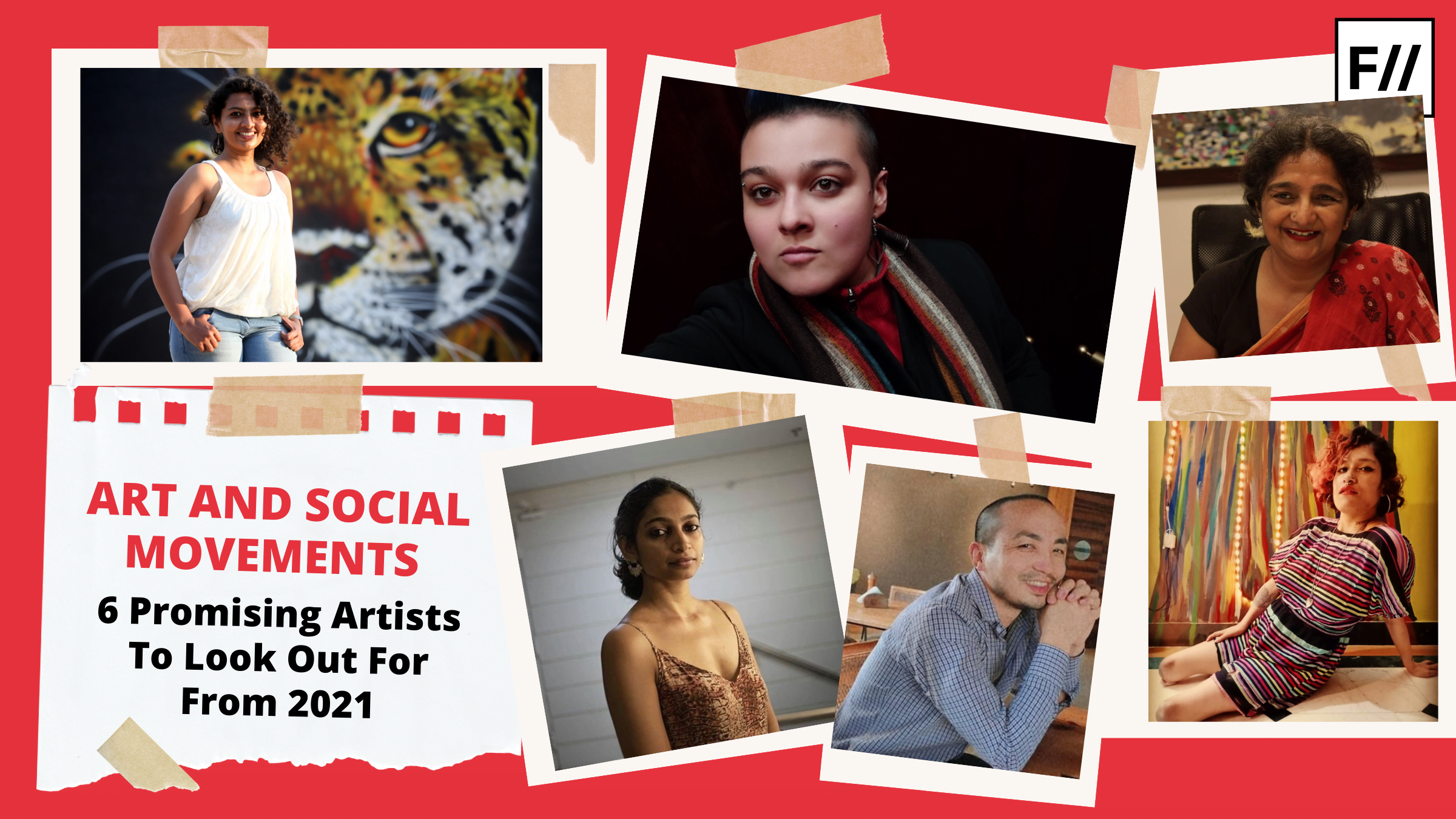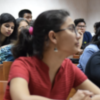Listicles, by virtue of their inability in acknowledging the scope of developments that merit recognition, are fundamentally flawed. The following is, therefore, an imperfect attempt to underscore the works of artists who have secured recognition for their sustained investment in art in the past year.
The term ‘artists’ typically accommodates writers, painters, singers, curators, filmmakers, comedians, actors, theatre performers, etc. I have tried to be inclusive in not only social representation, but also the type of art practice. The focus has been on highlighting independent creators and emerging artists — belonging to India as well as the Indian diaspora — to confront and challenge the convenient neglect that they have encountered in mainstream discourses dominated by familiar faces.
The focus has been on highlighting independent creators and emerging artists — belonging to India as well as the Indian diaspora — to confront and challenge the convenient neglect that they have encountered in mainstream discourses dominated by familiar faces.
1. Shirin Shaikh

Born in India, Shirin Shaikh (she/her) currently lives in Switzerland. She is a multidisciplinary artist and an illustrator who works primarily with graphite, embroidery, oils, and digital illustrations. Previously, she has collaborated with a number of NGOs, including ResQ Charitable Trust in Pune and Aravani Art Project in Bangalore. Her wall painting and graffiti collaboration with Healing Himalayas Foundation has continued since 2017.
This year, Shirin was awarded with the Research Residency in Pro Helvetia At Switzerland. She also contributed an illustration for the photobook, Happy Switzerland. Other recent projects include the four-year birthday jam for WallStreet, Geneva and Stuki Jam by Urbankunst, Basel. In these projects, she painted a single cell organelle and additionally depicted a fight between antiviruses and antigen.
In 2021, she also created artwork for FOIFVIER, showcasing the history of Baden city. The names of important places in the city were written in bubble font without any spacing to give the impression of a puzzle. She continues to work on sculptures, home decor projects, and wall murals.
Also read: Taking A Look At The Colours, Signs And Symbols Used In The Feminist Movements
2. Mallika Taneja

Mallika Taneja’s Allegedly is a play that functions at the intersection of sexual violence and social justice. Commissioned first by Zubaan Publishers, the performance was soon adapted to Zoom during the pandemic. In July 2021, the play was performed live in the National Arts Festival, South Africa. The online adaptation was co-produced by Beursschouwburg Brussels, Kunstencentrum Vooruit Ghent, and Khoya Paya.
The online performance utilises the features offered by digital tools. Zoom, for instance, facilitates a recurrent poll that helps the play raise and ask uncomfortable questions that collectively expose the contradictions and irregularities plaguing feminist solidarities. The exhausting conversation between Mallika and her lawyer-friend makes explicit the exhaustion that survivors navigate when they prepare for or confront legal infrastructures. Accompanying this dialogue is the larger chorus of women who situate this personal story of violation ‘delayed’ by sixteen years, in broader social and political realities as they, too, question its relevance and validity.

Allegedly won the ZKB Patronage Prize 2021 at Zürcher Theater Spektakel, an international festival of performing arts in Zurich. In addition to securing international recognition for her work, Mallika spearheaded another project this year. Titled “Rest of the Struggle,” it is a two-week long program that endeavours to contemplate on and seek spaces and strategies for rest. The first iteration of the project was hosted in collaboration with Spielart Theaterfestival from October 22 to November 6.
3. Shivangi Agrawal
Shivangi Agrawal (she/her) is a queer artist with disabilities, a researcher and an accessibility consultant with demonstrable experience in advocacy and education. Previously, she has received a range of awards and scholarships at Oregon State University, her alma mater. She has also been awarded with the Candy Pierson-Charlton Award.
This year, Shivangi was presented with the Creating Heroines Grant by the British Council. As part of Creating Heroines, a week-long workshop series led by Dr Nicola Streeten was organised for mid-career artists selected for the grant. Practical exercises helped the artists to develop multimedia content through comics, zines, short films, graphic novels, and animation. The theme allowed the grantees to reflect on heroines from the past and envisage heroines for the future.

Shivangi also hosted an external session on zine making for fellows who have been selected for the Red Door Fellowship. The Fellowship is an initiative of The Red Door that aims to nurture young women leaders for driving positive social change. Shivangi’s session showcased how the fellows could utilise the therapeutic art of making zines for social movements that they were passionate about.
4. Kumam Davidson
Kumam Davidson (he/they) is a PhD scholar at Jawaharlal Nehru University. He is also the co-editor at The Wari Initiative and the co-founder of The Chinky Homo Project. Previously, he was awarded the Zubaan-Sasakawa Peace Foundation Grant in 2019 and the Artist in Residence Mental Health Design in 2020.
This year, Kumam’s work was selected for “Through Her Lens: Reframing the Domestic,” a collaborative project spearheaded by Zubaan Publishers and NEthing. Through Her Lens attempts to expand the photographic practices of people from traditionally marginalised communities in the eight Northeast Indian states and Darjeeling Hills. Reframing the Domestic is the second programme under the visual research project, Through Her Lens.

Kumam’s series blend his queer feminist ethos in the depiction of the everyday life of a woman. He contends that the shared domestic spaces during a lockdown become inevitable mediators of contestations and interactions between women and patriarch(s), presenting noteworthy insights on gendered roles and everyday oppression. Curated by Mridu Rai and Anushya Pradhan, the exhibition was launched in August in Guwahati. An online exhibition can also be accessed.
Also read: Redefining The ‘Mainstream’: Queer Representation And Content On OTT Platforms
5. Anahita Sarabhai
Anahita Sarabhai (she/they) is an acclaimed queer performing artist and educator. She is the founding director of QueerAbad, an Ahmedabad based community space for queer folks and allies. In March, she was invited as a speaker to a TEDx event organised by IIT Hyderabad where she spoke about the risk intact in the everyday of queer individuals. Her talk ended with an arresting poem, titled “Queer.”

In October, Anahita spoke at Candid, a queer feminist baithak organised by the Centre for Studies in Gender and Sexuality at Ashoka University. The conversation probed into utopian futures envisaged in the everyday and the work that can actualise them. Additionally, the baithak questioned whether academically theorised intersectional feminist and queer values can be practiced daily.
In November, Anahita and her team members at QueerAbad hosted a four-week crash course on Indian Sign Language. Titled “Hands On,” the course introduced the participants to the fundamentals of conversing in and understanding Indian Sign Language.
6. Hansa Thapliyal
Hansa Thapliyal (she/her) is a filmmaker, a writer, and a doll-maker. She has successfully hosted a number of doll making workshops. She urges fellow doll makers to think about the abstract textures of their feelings and mould them into the shape of dolls. Her multidisciplinary background in art informs the pluralities of her doll-making practice.

Hansa and Jayachandra Varma Rekandar received a fellowship from the Indian Foundation for the Arts (IFA) to work with Visvesvaraya Industrial and Technological Museum under the Archival and Museum Fellowships initiative that was made possible with support from Tata Trusts. They worked together on an interdisciplinary project, intersecting the rather divergent worlds of art and science. The children of Surabhi theatre, along with Jayachandra, instructed children from Bangalore (who participated in the workshop), about how they (children from Surabhi theatre) use science in the theatre. The children of Surabhi theatre were co-facilitators in the workshop.
The iconic play, The Children’s Maya Bazaar, was already directed by Jayachandra well before the collaboration with Hansa Thapliyal began. The 35 children from Surabhi Theatre went on to recreate the special effects in the iconic play. In 2021, IFA hosted a presentation by Hansa, Jayachandra and the children from Surabhi Theatre. Additionally, Hansa’s doll making practice reached new heights as she facilitated doll making sessions in Spielart Theatre Festival 2021. Hansa attempts to defy conventional ideals of beauty by creating dolls that might not make for traditionally “charming playthings”. As she says in an Indian Express interview, ”We have tyrannical ideas of beauty. I don’t find my dolls looking weird but I can understand somebody else might.”
Disclaimer: This is by no means an exhaustive or representative list. Suggestions to add to the list are welcome in the comments section.
About the author(s)
Mridula Sharma is a researcher and a writer. Her work lies in the intersection of feminist theory, postcolonial studies, and popular culture.





